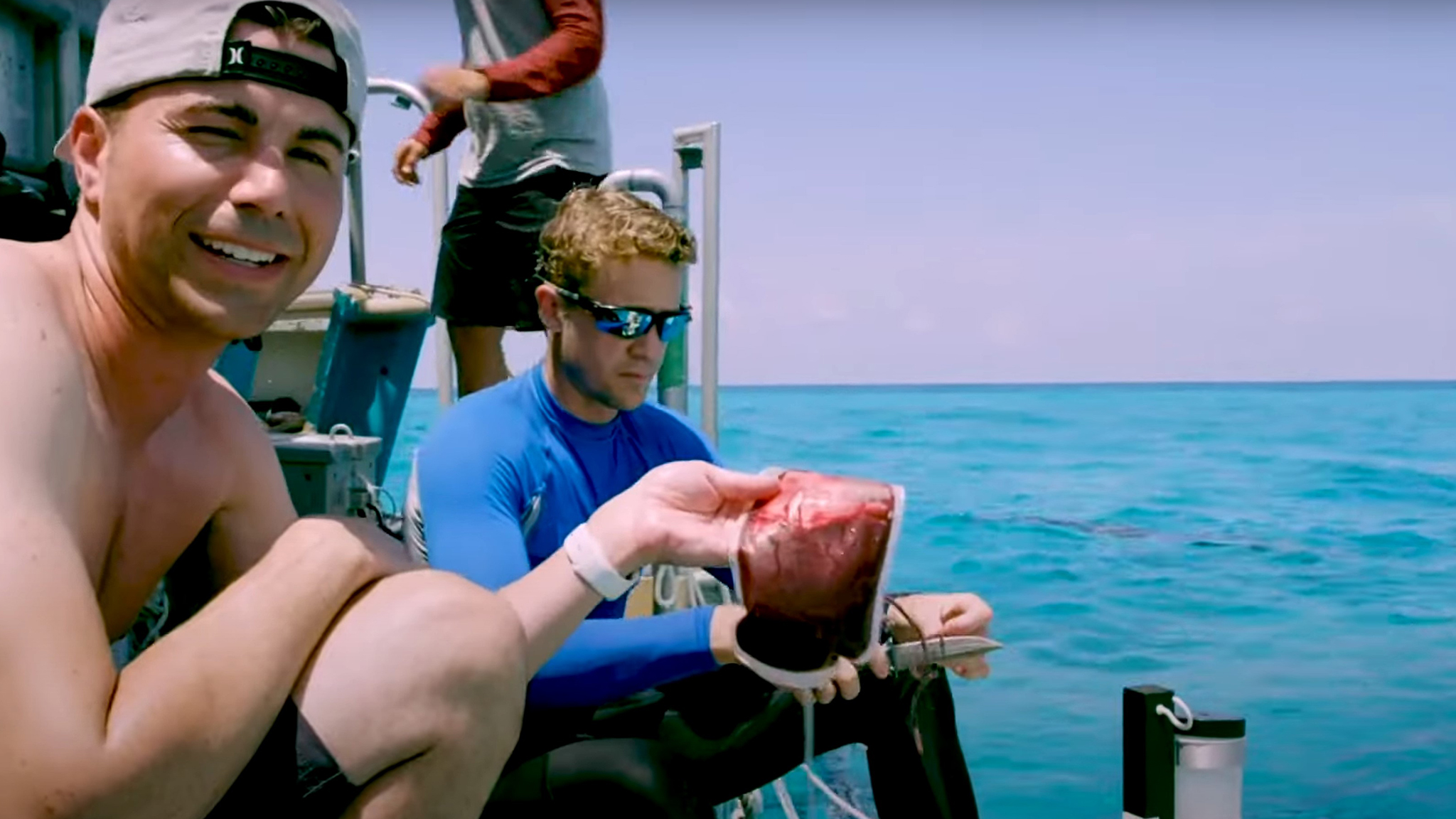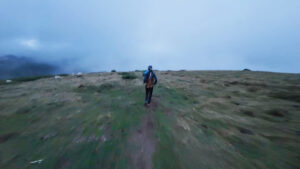Does the smell of human blood really whip sharks into a feeding frenzy? And if so, how much blood does it take?
These are the questions that plagued Mark Rober. You may know Rober from his viral squirrel obstacle course videos. But don’t let the YouTuber’s affable nature and click-friendly content fool you.
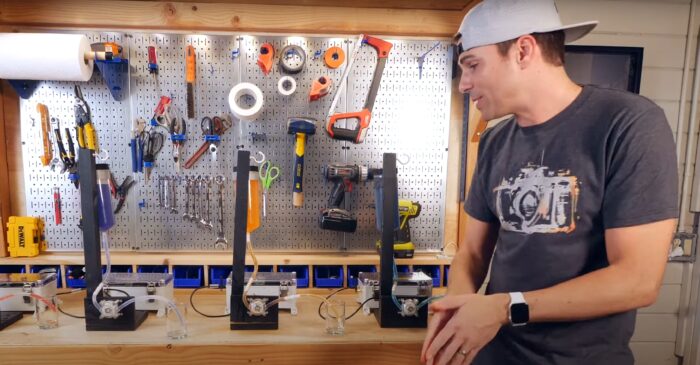
YouTuber Mark Rober is a mechanical engineer with an impressive resumé. Photo: Screenshot
The formally trained mechanical engineer spent the better part of a decade at NASA’s Jet Propulsion Laboratory working on the Curiosity Rover, then jumped ship to Apple for a few years as a mechanical engineer on a product design team.
So the man knows his business. And with the help of the Discovery Channel, he set about designing and implementing a scientifically rigorous experiment to test what the movies would have us believe.
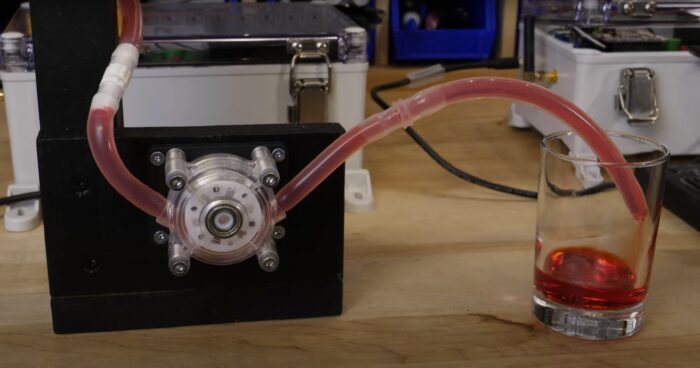
The pumping device. Photo: Screenshot
The experiment (part one)
First, Rober designed and built four surfboard-mounted pumps and filled them with four liquids: cow’s blood, urine, fish oil, and seawater (as a control). The pumps squirted two liters of each liquid into shark-infested waters over the course of an hour while cameras rolled and the crew looked on.
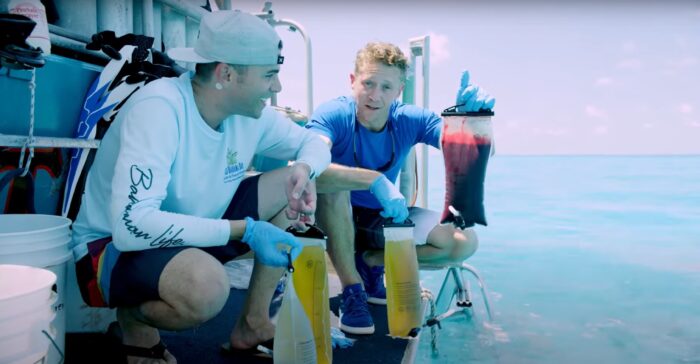
Photo: Screenshot
Forty-five minutes in, it seemed the sharks were more interested in the fish oil than anything else, and that only slightly. But with 15 minutes left in the experiment, the sharks started following the diffused blood to the surfboard.
By the end of the hour, 41 sharks had visited the blood board, with only two visiting the fish oil board and zero visiting the sea water and urine boards.
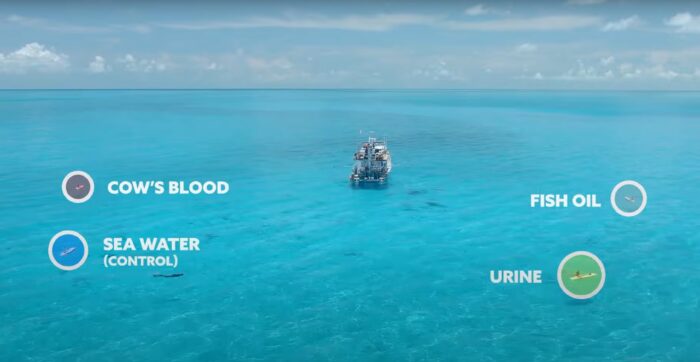
Photo: Screenshot
The results are interesting because it took a lot of blood in the water to attract the sharks (after all, losing two liters of blood will kill you, no matter what the sharks do). And the lack of interest in the urine board appears to put the common surfer lore of “don’t pee in your wetsuit because it will attract sharks” to rest.
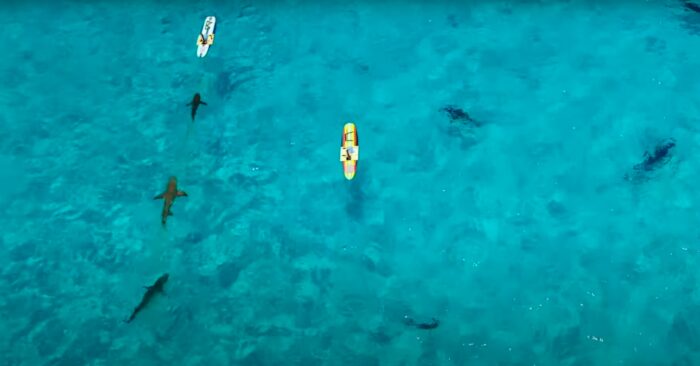
Photo: Screenshot
But Rober wasn’t satisfied with one aspect of his experiment: the cow’s blood. What he really wanted to test was how the sharks would respond to human blood.
The experiment (part two)
Availing himself freely of the Discovery Channel’s massive budget, Rober made some calls and had a phlebotomist transferred out to the team’s boat, where members of the ship’s crew gamely offered up their vital bodily fluids.
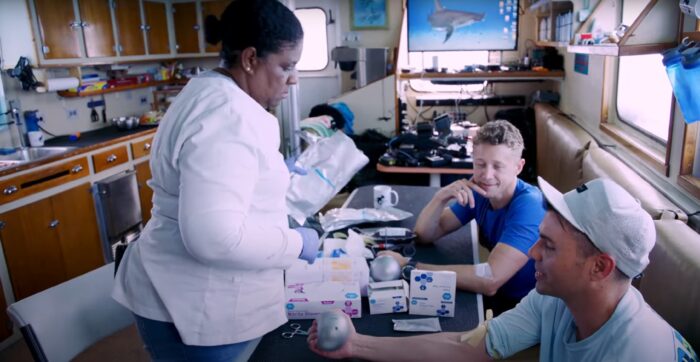
Photo: Screenshot
Then Rober ran the experiment again, changing the parameters to include three boards — a seawater control board, a board pumping blood slowly (one drop a minute), and a board pumping blood quickly (one drop every four seconds).
What happened next? You’ll have to watch the short video (15 minutes) to find out, but you might be surprised by the results. Rober certainly was!
